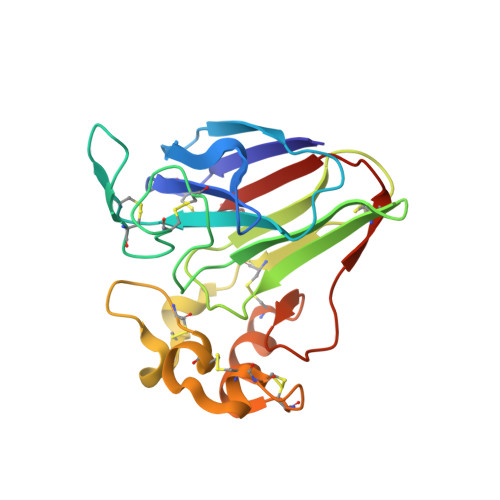Protein structure determination by single-wavelength anomalous diffraction phasing of X-ray free-electron laser data.
Nass, K., Meinhart, A., Barends, T.R., Foucar, L., Gorel, A., Aquila, A., Botha, S., Doak, R.B., Koglin, J., Liang, M., Shoeman, R.L., Williams, G., Boutet, S., Schlichting, I.(2016) IUCrJ 3: 180-191
- PubMed: 27158504
- DOI: https://doi.org/10.1107/S2052252516002980
- Primary Citation of Related Structures:
5FGT, 5FGX - PubMed Abstract:
Serial femtosecond crystallography (SFX) at X-ray free-electron lasers (XFELs) offers unprecedented possibilities for macromolecular structure determination of systems that are prone to radiation damage. However, phasing XFEL data de novo is complicated by the inherent inaccuracy of SFX data, and only a few successful examples, mostly based on exceedingly strong anomalous or isomorphous difference signals, have been reported. Here, it is shown that SFX data from thaumatin microcrystals can be successfully phased using only the weak anomalous scattering from the endogenous S atoms. Moreover, a step-by-step investigation is presented of the particular problems of SAD phasing of SFX data, analysing data from a derivative with a strong anomalous signal as well as the weak signal from endogenous S atoms.
- Department of Biomolecular Mechanisms, Max Planck Institute for Medical Research , Jahnstrasse 29, 69120 Heidelberg, Germany.
Organizational Affiliation:

















